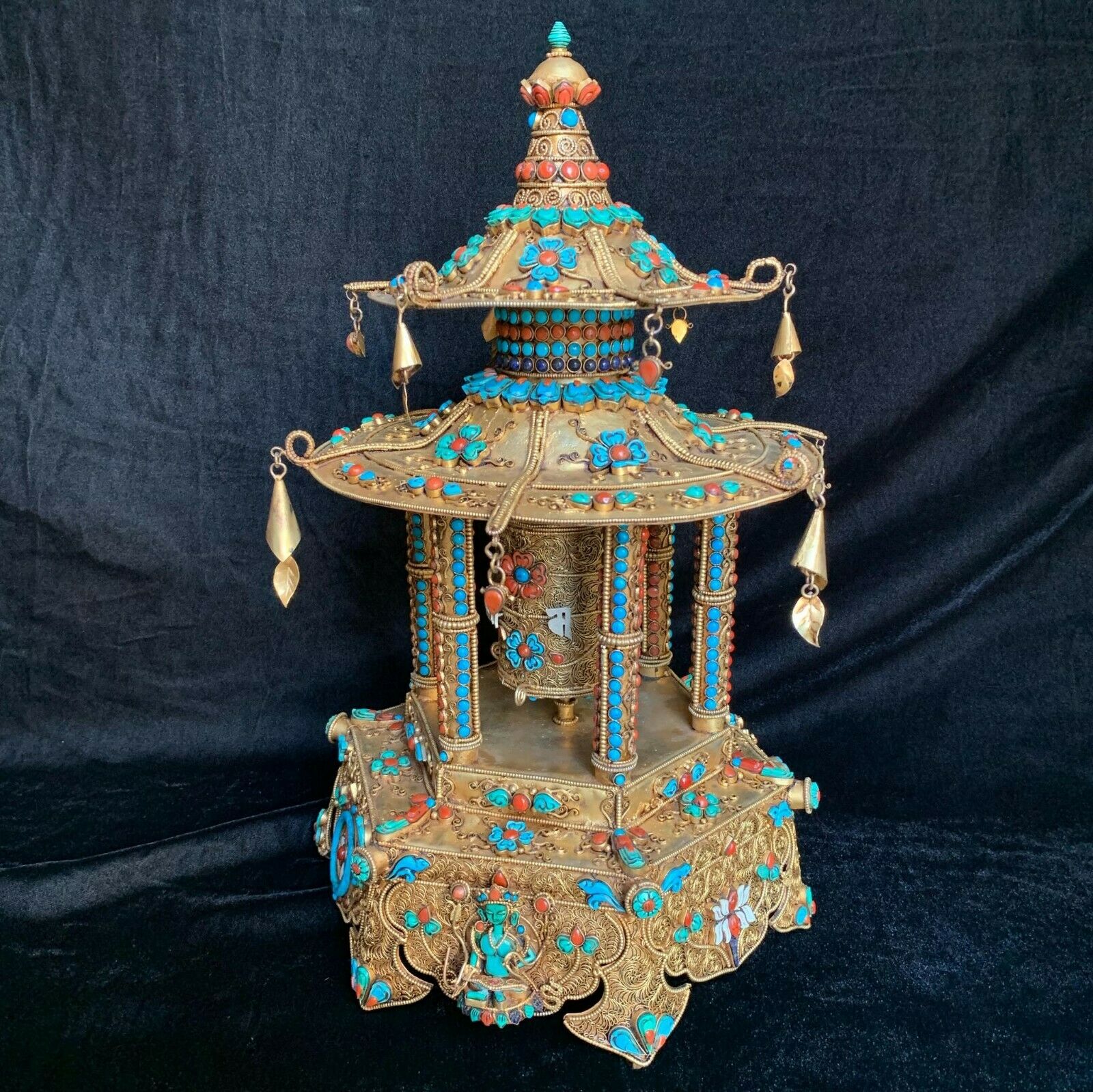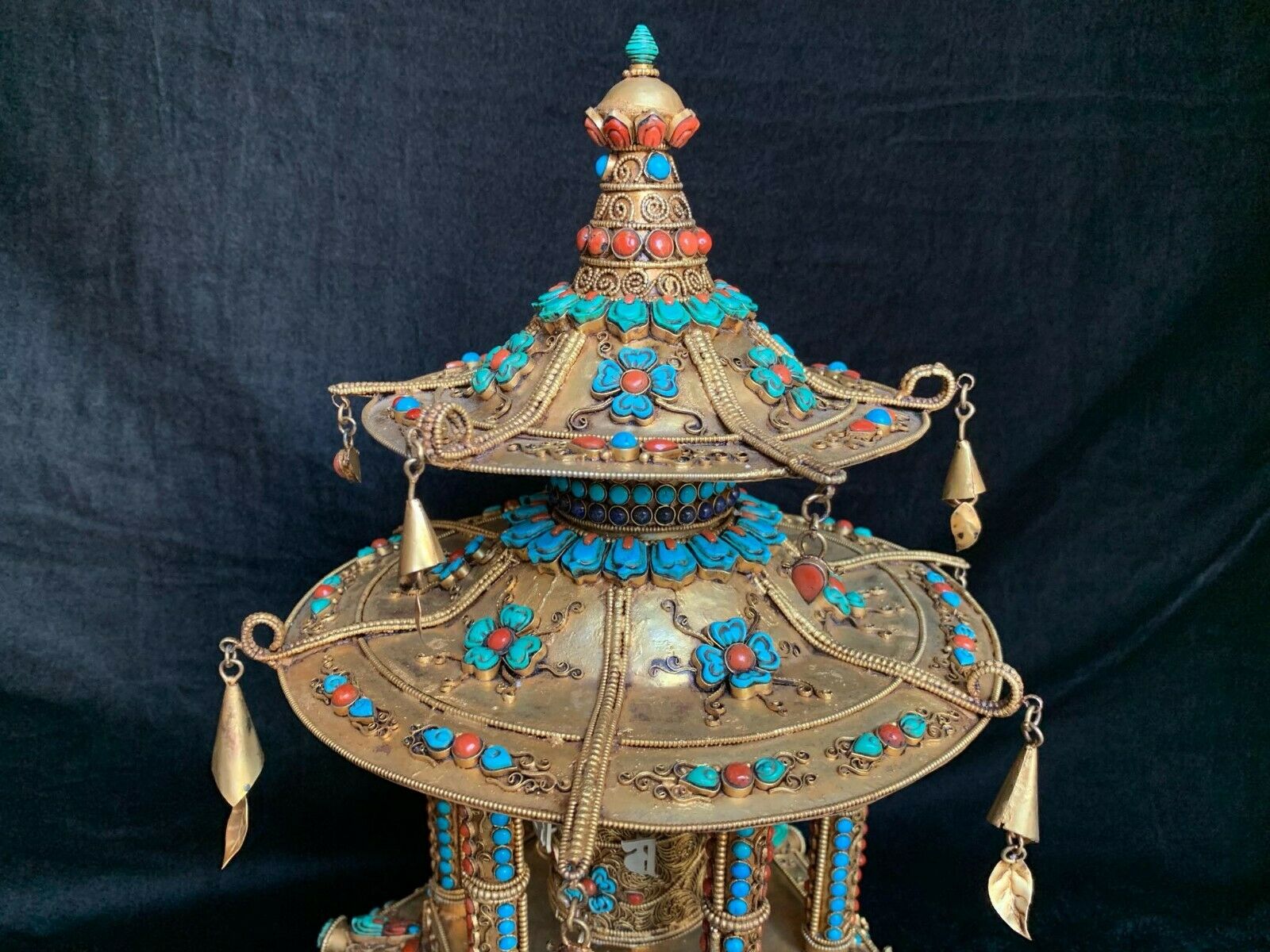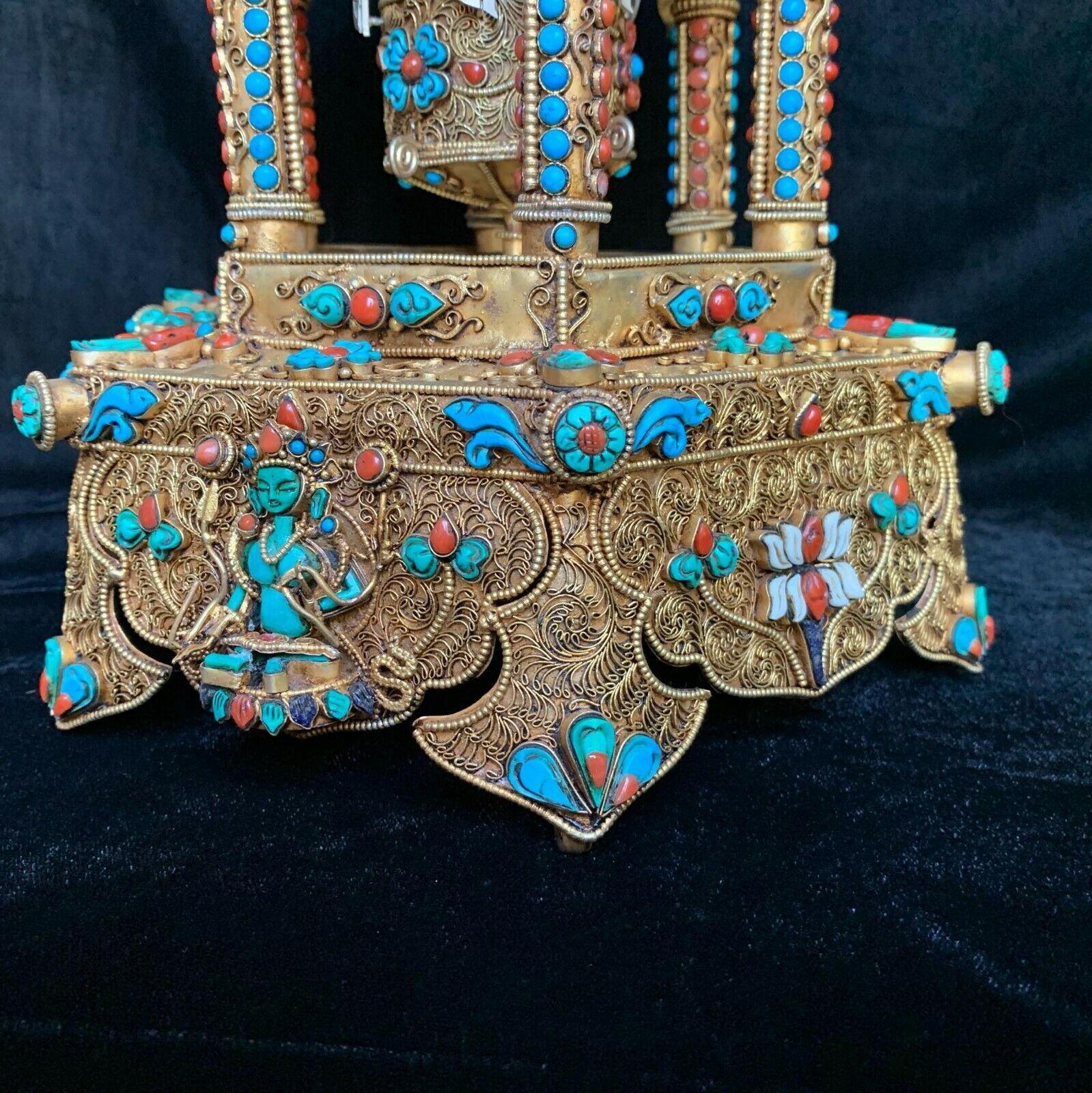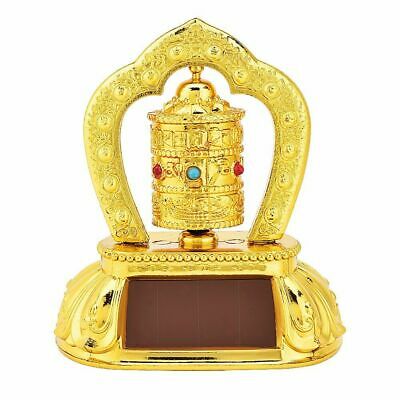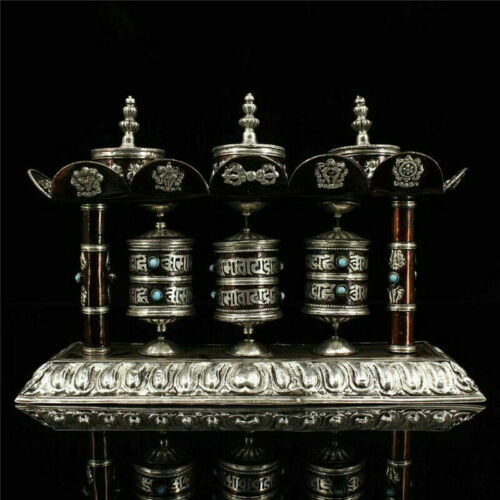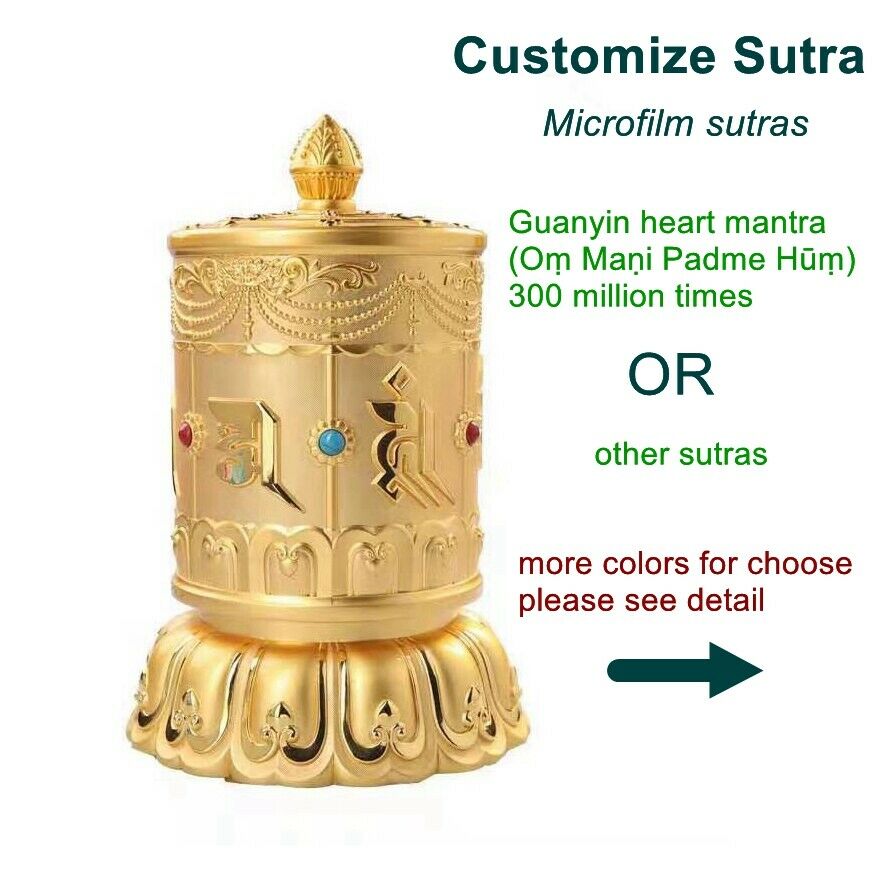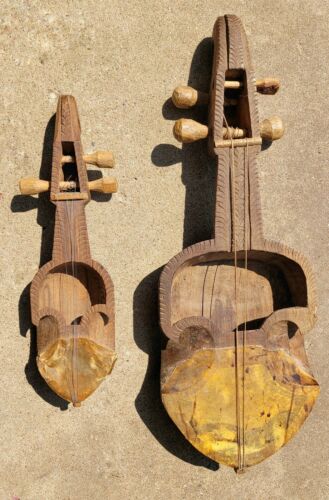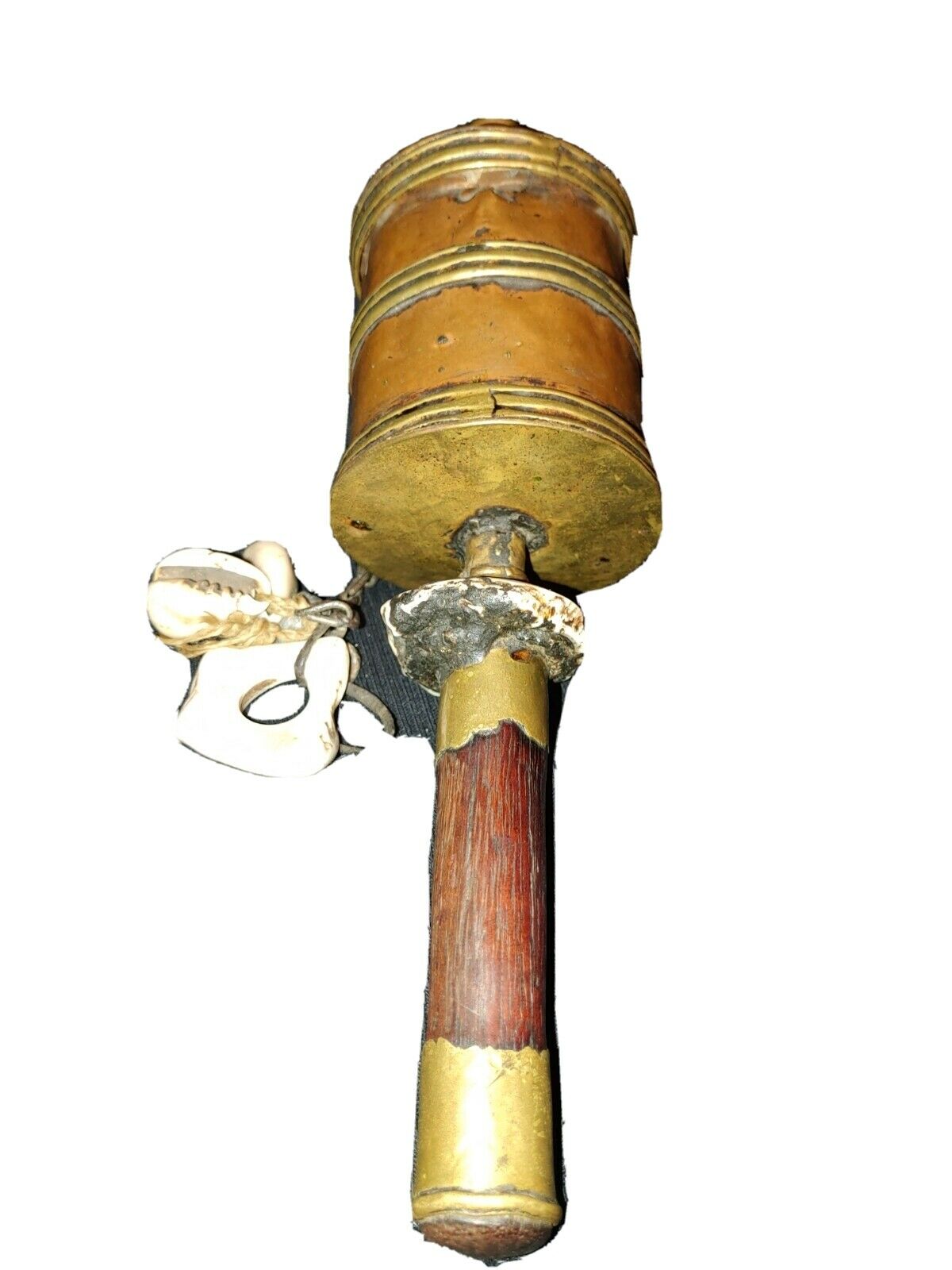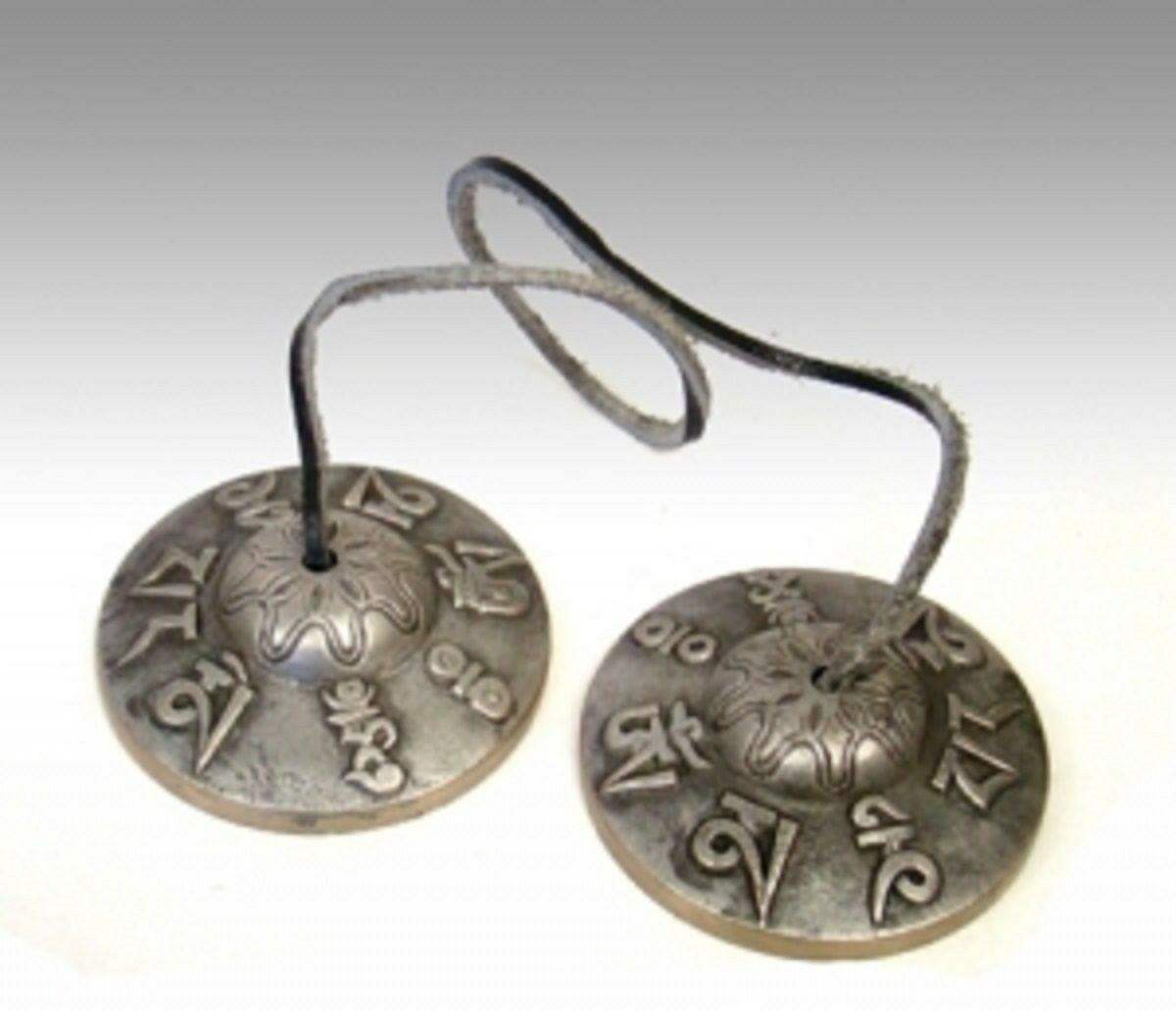-40%
Masterpiece Nepal Prayer Wheel with Gem Inlay
$ 1235.51
- Description
- Size Guide
Description
Materials:Gold-plated copper
Lapis lazuli
Coral
Turquoise
Seashell
Dimensions & Weight:
Height: 15 inches
Width at base: 9 inches
Weight: 2 kilograms
Shipping Origin:
Kathmandu, Nepal
Description:
This extraordinary prayer wheel is set in a gilt enclosure with inlay of coral, turquoise, lapis lazuli, and seashell.
Mounted in silver-plated copper on the circumference of the wheel is the mantra Om Mani Padme Hum.
Set in the base are three figures:
Manjushri (in coral) -
depicted as a male bodhisattva wielding a flaming sword in his right hand, representing the realization of transcendent wisdom which cuts down ignorance and duality; Green Tara (in turquoise) -
the
Bodhisattva of enlightened activity; and Chenrezig (in seashell) -
the most revered of all Bodhisattva, embodying the compassion of all Buddhas.
On the edge of the enclosure top are bells.
The bell is wisdom and emptiness.
Sound, as a metaphor for wisdom, suggests emptiness; in ancient belief, the relative universe arose from a sound.
Spinning such a wheel will have much the same meritorious effect as orally reciting the mantra.
This belief derives from the Buddhist belief in the power of sound and the formulas to which deities are subject.
For many Buddhists, the prayer wheel also represents the Wheel of the Law (or Dharma) set in motion by the Buddha.
It is best to turn the wheel with a gentle rhythm, clockwise, and not too fast or frantically.
While turning smoothly, one keeps in mind the motivation and spirit of compassion and bodhichitta (the noble mind that aspires to full enlightenment for the benefit of all beings).
The benefits attributed to the practice of turning the wheel are vast.
Not only does it help wisdom, compassion and bodhichitta arise in the practitioner, it also enhances siddhis (spiritual powers such as clairvoyance, precognition, reading others thoughts, etc.).
The practitioner can repeat the mantra as many times as possible during the turning of the wheel, stabilizing a calm, meditative mind.
At the end of a practice session, there is a Tibetan Buddhist tradition of dedicating any accumulated merits that one may have gathered during practice to the benefit of all sentient beings.
